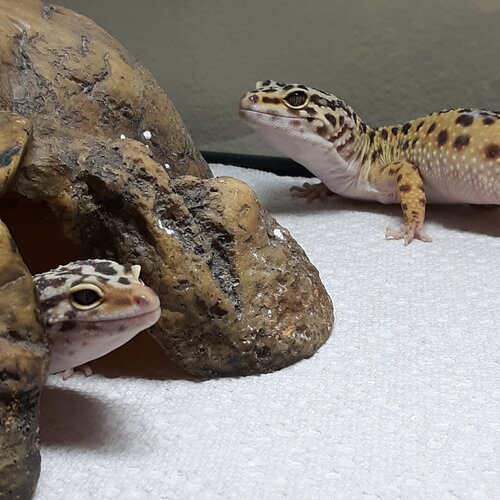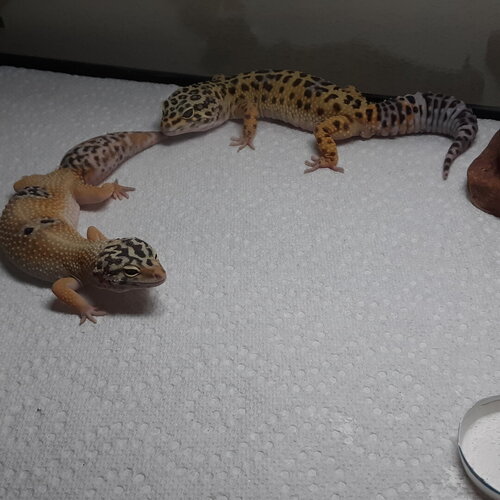MissSkittles
Chameleon Enthusiast
Nine days ago I picked up a pair of leopard geckos off craigslist. I was told both are male and they have been kept in the same tank for who knows how long. I looked and found one is female, the other male and separated them. They look to be adults. He weighs 58 gm and she weighs 53 gm.The first night they both ate several feeders. Since then, only the female is eating and she is quite enthusiastic about it. The male has only taken a total of 3 lg bsfl and 1 med roach...only taking one of them per feeding day and has really no interest in food. I’ve tried bsfl, roaches, crickets and super worms...all no go. I know they go thru periods of not eating, but at what point should I be concerned? They were kept on sand before and I thought impaction, but he’s had several small but healthy looking poos. White urate so he’s drinking. Tanks are 20 gal long, paper towel substrate, 2 hides - 1 cool and 1 warm to high 80’s, moist moss inside warm hide, fresh water daily, cup of calcium no d, no lights but do have dim nightlights for them. Have Repashy super cal but haven’t yet dusted his feeders...the girl had a yuck reaction so don’t want that to further deter him from eating. He stays on the warm side of the tank all the time. Any advice?






